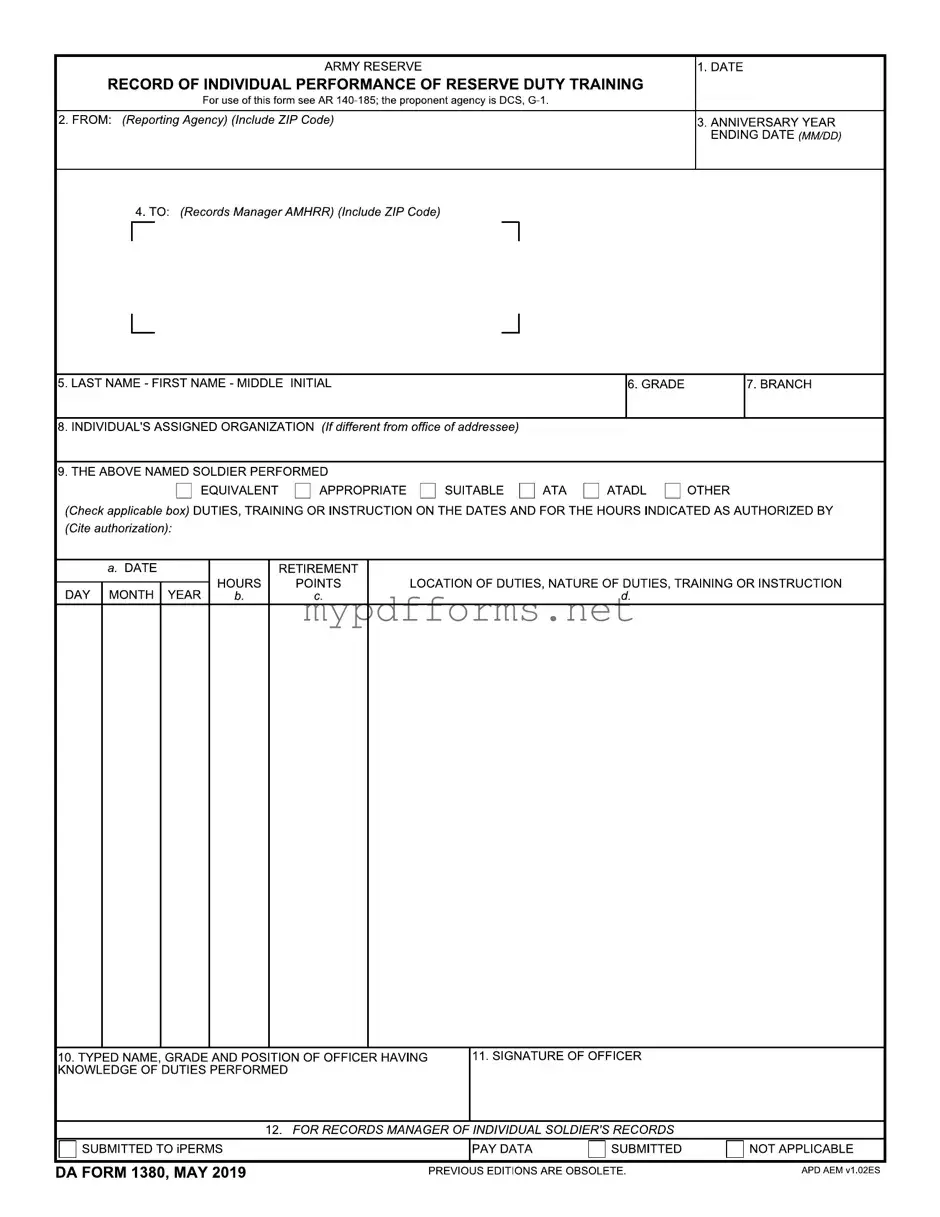The DA Form 1059, or the Service School Academic Evaluation Report, serves a purpose similar to that of the DA 1380. Both documents are utilized to record performance and achievements during specific training periods. While the DA 1380 focuses on Reserve duty training, the DA 1059 is specifically designed to evaluate an individual’s performance in formal military schools. This form captures critical data such as the soldier's grade, attendance, and overall performance, providing a comprehensive view of the soldier's capabilities and areas for improvement. Both forms are essential for maintaining accurate records that contribute to a soldier’s professional development and future assignments.
The DA Form 4187, commonly known as the Personnel Action form, also shares similarities with the DA 1380. This form is used to document various personnel actions, including changes in duty status, promotions, and training attendance. Like the DA 1380, the DA 4187 requires detailed information about the individual, such as their name, grade, and the nature of the action being reported. Both forms are crucial for maintaining accurate personnel records and ensuring that soldiers receive appropriate credit for their training and performance. The DA 4187 often accompanies other documentation to provide a complete picture of a soldier's career progression.
When preparing your legal documents, understanding the nuances of a comprehensive Power of Attorney arrangement is crucial. For more information, visit this detailed guide on Power of Attorney to ensure you make informed decisions.
The DA Form 2-1, or the Personnel Qualification Record, is another document that parallels the DA 1380 in function. This form serves as a comprehensive record of a soldier's qualifications, training, and performance history. It includes information about completed training, military education, and other relevant details that contribute to a soldier's profile. Just as the DA 1380 records specific training events and duties performed, the DA Form 2-1 aggregates a soldier's entire career information. Both documents play a pivotal role in assessing a soldier's readiness and suitability for various assignments and responsibilities.
Lastly, the DA Form 200, or the Transmittal Record, is also comparable to the DA 1380 in terms of its administrative function. This form is used to document the transfer of property or records, ensuring that all necessary information is accurately recorded and accounted for. While the DA 1380 focuses on training performance, the DA Form 200 ensures that all relevant documentation, including training records, is properly managed and transferred as needed. Both forms emphasize the importance of maintaining accurate records within military operations, thereby supporting the overall efficiency and accountability of military personnel management.
